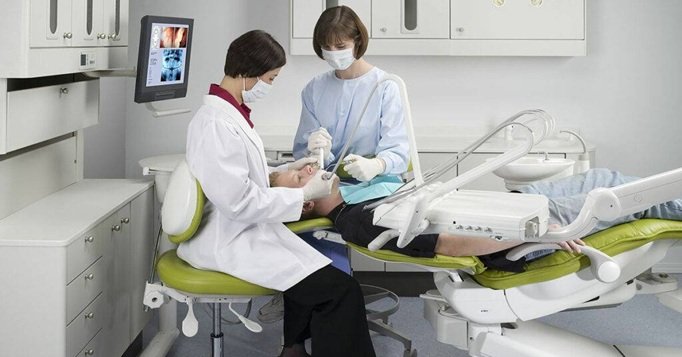Dental ergonomics is more than just a buzzword. It is an essential practice that affects both dentists and patients alike. As a dentist in Evanston, IL, you understand the physical demands of your job. The repetitive motions, awkward postures, and extended periods of sitting can lead to chronic pain. This discomfort not only affects your ability to work but can also impact patient care. When practitioners are in pain, their focus and precision may suffer. This could lead to less effective treatments. Patients, too, feel the impact. An uncomfortable dentist can create an uncomfortable experience for them. By prioritizing ergonomics, you reduce strain and increase comfort. This leads to better performance and happier patients. Embracing ergonomic practices safeguards your health and ensures high-quality care for those you serve. Understanding and applying these principles is crucial for long-term wellness and professional success.
Understanding Ergonomics in Dentistry
The importance of ergonomics extends beyond comfort. It encompasses efficiency, safety, and well-being in the workplace. For dentists, adopting ergonomic principles means arranging work areas and tools to fit their bodies and minimize strain. The goal is to prevent injuries before they happen. Ergonomics in dentistry focuses on proper seating, patient positioning, lighting, and instrument handling.
Common Ergonomic Challenges
Dentists often face challenges like maintaining awkward body positions and repetitive strain injuries. Over time, these issues lead to conditions like carpal tunnel syndrome, back pain, and neck tension. According to the Occupational Safety and Health Administration (OSHA), these problems are prevalent among dental professionals due to the repetitive nature of their tasks and prolonged static postures.
Benefits of Ergonomic Practices
Implementing ergonomic solutions in dental practices yields numerous benefits. Dentists experience less pain and fatigue, leading to improved concentration and productivity. Patients benefit from better care and shorter treatment times. Furthermore, a focus on ergonomics can extend the careers of dental professionals by reducing the risk of early retirement due to health issues.
| Ergonomic Practice | Practitioner Benefit | Patient Benefit |
|---|---|---|
| Proper Seating | Reduces back and neck strain | More attentive care |
| Efficient Work Layout | Decreases muscle fatigue | Shorter wait times |
| Correct Instrument Handling | Prevents hand and wrist injuries | Ensures precision in treatment |
Practical Steps for Dentists
Incorporating ergonomic practices does not require complete overhauls. You can make small changes that significantly impact your health and work quality. Ensure your seating supports your lower back and allows your feet to rest flat on the ground. Position patients so that you can maintain a neutral posture. Organize your tools within easy reach to avoid overextending or twisting your body.
Education and Training
Continuous education on ergonomics is vital. Many dental schools now include ergonomics in their curricula. However, practicing dentists can benefit from workshops and seminars that offer updated techniques and tools. Keeping up with the latest ergonomic findings ensures that you and your patients enjoy the best possible outcomes.
Commitment to Wellness
By prioritizing ergonomics, you demonstrate a commitment to your wellness and professional excellence. This commitment involves regular assessments of your workspace and practices to identify areas for improvement. Additionally, fostering a culture that values health can inspire your team and improve overall clinic performance.
In conclusion, dental ergonomics is not a temporary trend but a necessary strategy for long-term success. Understanding and implementing ergonomic principles enhances your well-being, extends your career, and improves patient satisfaction. Recognizing the impact of ergonomics ensures that both practitioners and patients enjoy better health outcomes and a more productive environment.



